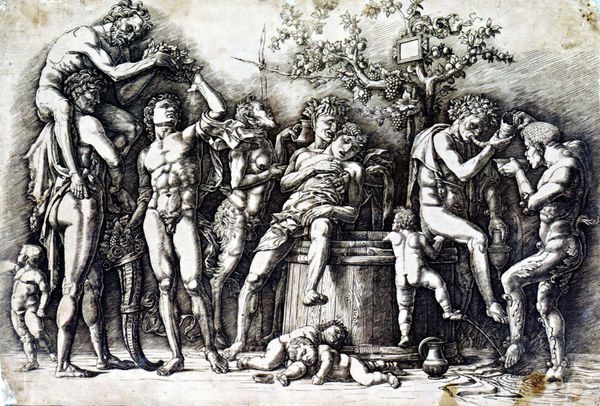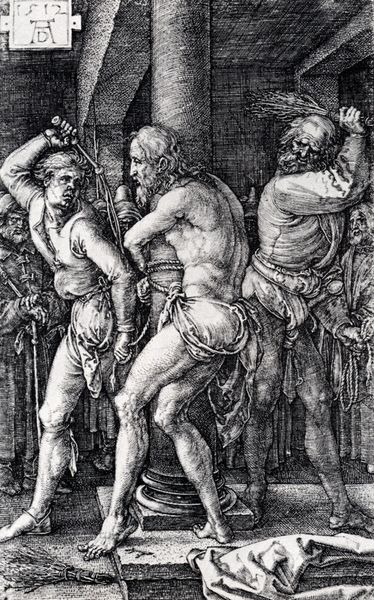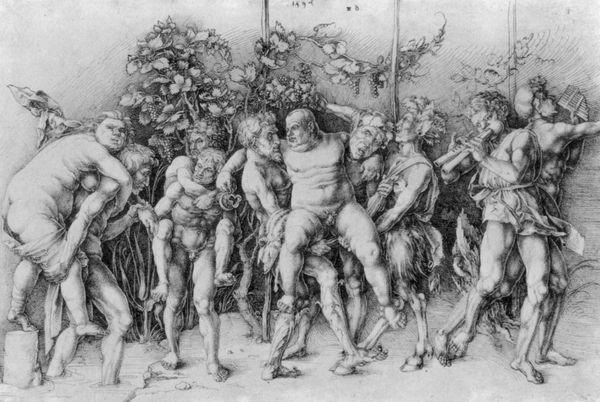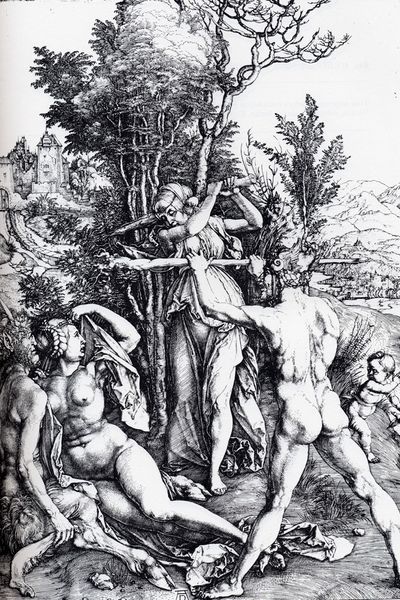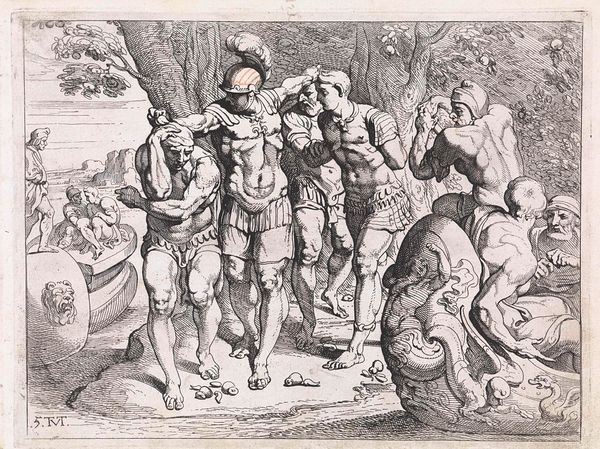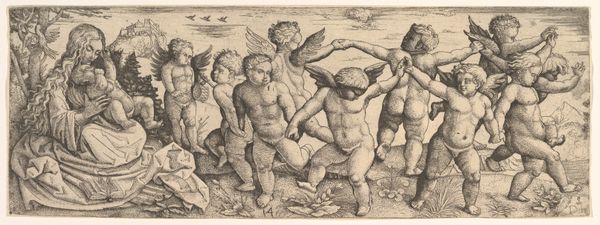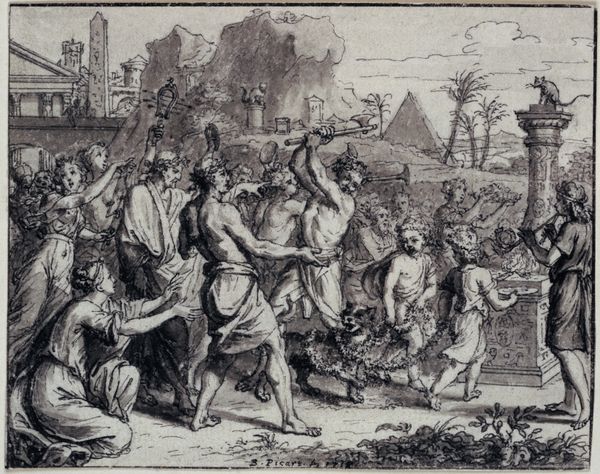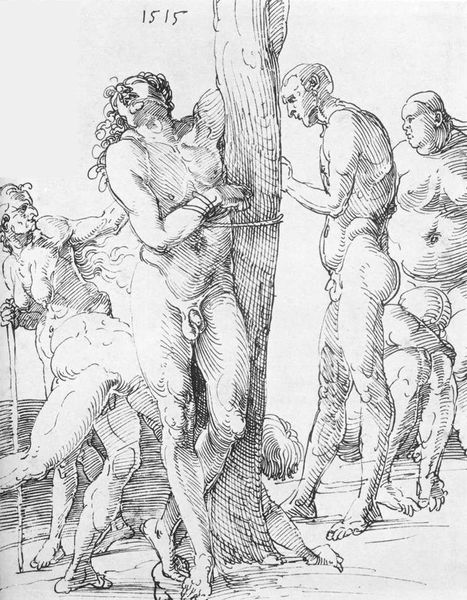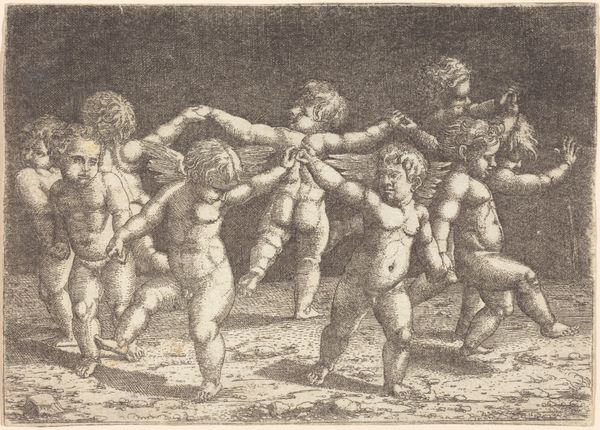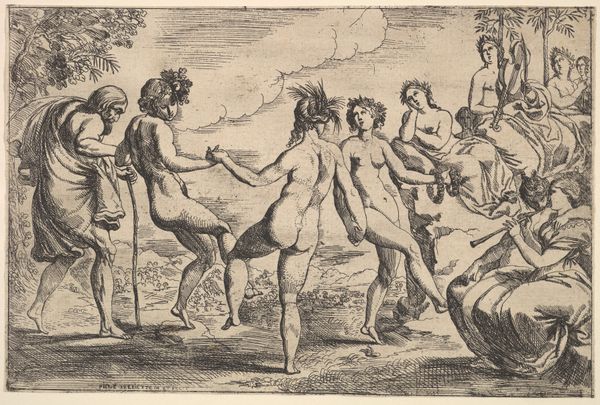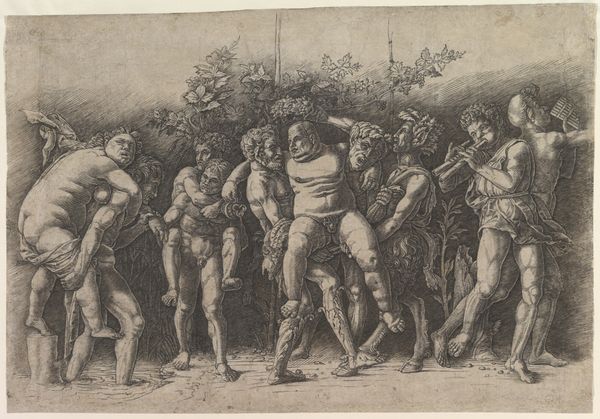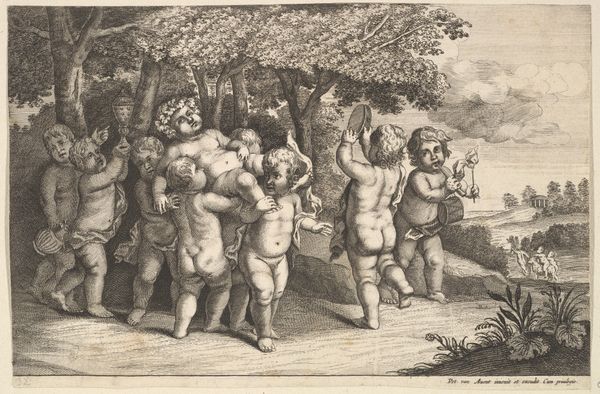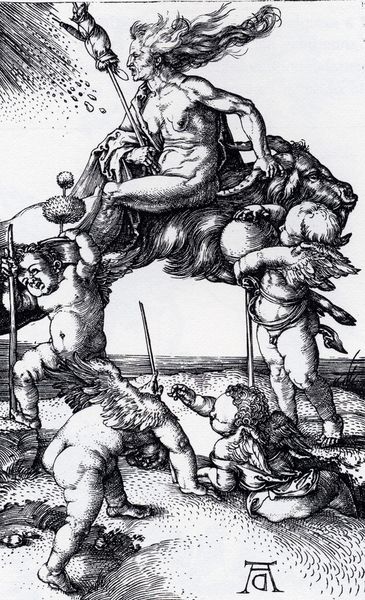
print, engraving
# print
#
figuration
#
11_renaissance
#
roman-mythology
#
group-portraits
#
mythology
#
human
#
line
#
genre-painting
#
history-painting
#
italian-renaissance
#
nude
#
engraving
Copyright: Public domain
Editor: So, here we have Andrea Mantegna's "Bacchanal in Silene," an engraving from around 1480. It's quite chaotic! All these figures intertwined, almost like a visual overload. What's your take on this? Curator: From a materialist perspective, this print speaks volumes about the shift in artistic production during the Renaissance. The very act of engraving – the labour, the tools used, the deliberate, reproducible marks on the plate – allowed for wider dissemination of classical themes, which were previously confined to unique paintings commissioned by the elite. Editor: Interesting! So the medium itself democratized the imagery? Curator: Precisely! Consider the subject: a bacchanal, a scene of unrestrained revelry associated with Bacchus, the Roman god of wine. This wasn’t simply about illustrating a myth. Mantegna’s choice of engraving as a medium made this vision of ecstasy available to a growing middle class, sparking dialogues about consumption, pleasure, and social order. Editor: It's a really sharp image... I imagine it takes precision to render a composition like that! Was it common to recreate artworks through printmaking at the time? Curator: Think about the access to artistic production it provides. Here we have ancient mythology being translated through labor intensive methods to mass produce 'high art' for larger groups of consumers. Do you think this challenges notions about art? Editor: I think that it does challenge my understanding of it. The creation is inherently bound to class, which makes the act of mechanically reproducing this classical subject interesting because it becomes almost subversive! Curator: Exactly. We often forget to examine the economic structures that underpinned the Renaissance. The circulation of prints like this one highlights how art served not only aesthetic but also commercial and social functions, transforming it from a unique commodity to a widely accessible medium of cultural exchange.
Comments
No comments
Be the first to comment and join the conversation on the ultimate creative platform.
